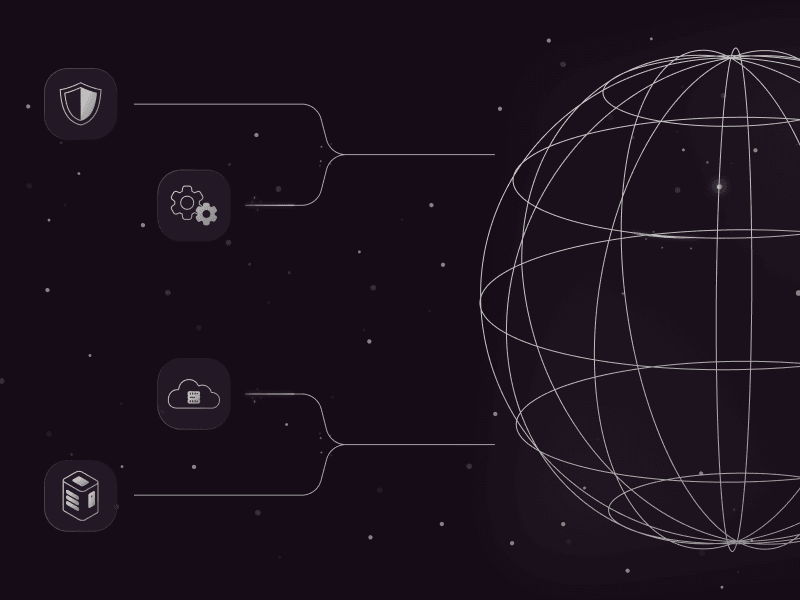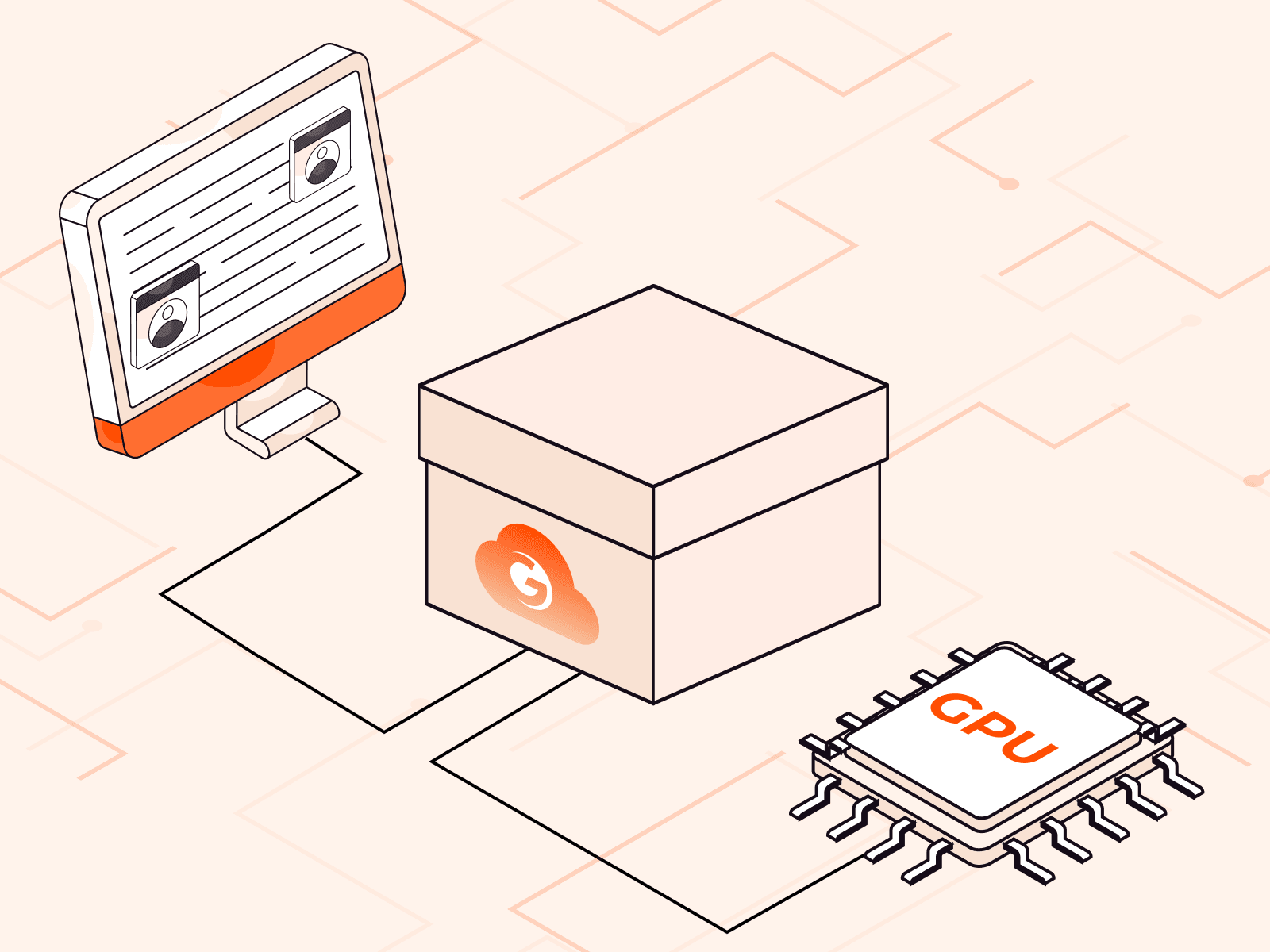5 Reasons to Use Kubernetes for AI Inference
- August 5, 2024
- 4 min read

This article is written by Zulyar Ilakhunov, a Gcore DevOps Engineer. It originally appeared on The New Stack.
Kubernetes is suitable for a wide range of cloud-native applications with dynamic loads. This includes applications related to AI inference, whether AI-enabled microservices or ML models. Many of the key features of Kubernetes naturally fit the needs of AI inference, almost as if they were invented for the purpose. In this article, we’ll look at these features and how they benefit inference workloads.
1. Scalability
Scalability for AI-enabled applications and ML models ensures they can handle as much load as needed, such as the number of concurrent user requests. Kubernetes has three native autoscaling mechanisms, each benefiting scalability: Horizontal Pod Autoscaler (HPA), Vertical Pod Autoscaler (VPA), and Cluster Autoscaler (CA.)
Horizontal Pod Autoscaler. HPA scales the number of pods running applications or ML models based on various metrics such as CPU, GPU, and memory utilization. When demand increases, such as a spike in user requests, HPA scales resources up. When the load decreases, HPA scales the resources down.
Vertical Pod Autoscaler. VPA adjusts the CPU, GPU, and memory requirements and limits for containers in a pod based on their actual usage. By changing limits in a pod specification, you can control the amount of specific resources the pod can receive. It’s useful for maximizing the utilization of each available resource on your node.
Cluster Autoscaler. CA adjusts the total pool of compute resources available across the cluster to meet workload demands. It dynamically adds or removes worker nodes from the cluster based on the resource needs of the pods. That’s why CA is essential for inferencing large ML models with a large user base.
Here are the key benefits of K8s scalability for AI inference:
- Ensuring high availability of AI workloads by automatically scaling up and down the number of pod replicas as needed
- Supporting product growth by automatically adjusting cluster size as needed
- Optimizing resource utilization based on an application’s actual needs, thereby ensuring that you only pay for the resources your pods use
2. Resource optimization
By thoroughly optimizing resource utilization for inference workloads, you can provide them with the appropriate amount of resources. This saves you money, which is particularly important when renting often-expensive GPUs. The key Kubernetes features that allow you to optimize resource usage for inference workloads are efficient resource allocation, detailed control over limits and requests, and autoscaling.
Efficient resource allocation. You can allocate a specific amount of GPU, CPU, and RAM to pods by specifying it in a pod manifest. However, only NVIDIA accelerators currently support time-slicing and multi-instance partitioning of GPUs. If you use Intel or AMD accelerators, pods can only request entire GPUs.
Detailed control over resource limits and requests. The requests define the minimum resources a container needs, while limits prevent a container from using more than the specified resources. This provides granular control over computing resources.
Autoscaling. HPA, VPA, and CA prevent wasting money on idle resources because if you configure these features correctly, you won’t have any idle resources at all.
The main benefit of K8s ability to optimize resource utilization is cost savings. With these Kubernetes capabilities, your workloads get the computing power they need and no more. Since renting a mid-range GPU in the cloud can cost $1–2 per hour, you save a significant amount of money in the long run.
3. Performance optimization
While AI inference is typically less resource-intensive than training, it still requires GPU and other computing resources to run efficiently. HPA, VPA, and CA are the key contributors to Kubernetes’ ability to improve inference performance. They ensure optimal resource allocation for AI-enabled applications even as the load changes. However, you can use additional tools to help you control and predict the performance of your AI workloads, such as StormForg or Magalix Agent.
Overall, the Kubernetes elasticity and ability to fine-tune resource usage allows you to achieve optimal performance for your AI applications, regardless of their size and load.
4. Portability
It’s critical that AI workloads, such as ML models, are portable. This allows you to run them consistently across environments without worrying about infrastructure differences, saving you time and, consequently, money. Kubernetes enables portability primarily through two built-in features: containerization and compatibility with any environment.
Containerization. Kubernetes uses containerization technologies, like containerd and Docker, to package ML models and AI-enabled applications, along with their dependencies, into portable containers. You can then use those containers on any cluster, in any environment, and even with other container orchestration tools.
Support for multi-cloud and hybrid environments. Kubernetes clusters can be distributed across multiple environments, including public clouds, private clouds, and on-premises infrastructure. This gives you flexibility and reduces vendor lock-in.
Here are the key benefits of the K8s portability:
- Consistent ML model deployments across different environments
- Easier migration and updates of AI workloads
- Flexibility to choose cloud providers or on-premises infrastructure
5. Fault tolerance
Infrastructure failures and downtime when running AI inference can lead to significant accuracy degradation, unpredictable model behavior, or simply a service outage. This is unacceptable for many AI-enabled applications, including safety-critical applications such as robotics, autonomous driving, and medical analytics. Kubernetes self-healing and fault tolerance features help prevent these problems.
Pod-level and node-level fault tolerance. If a pod goes down or doesn’t respond, Kubernetes automatically detects and restarts it; this ensures that the application remains available and responsive. If a node running a pod fails, Kubernetes automatically reschedules the pod to a healthy node.
Rolling updates. Kubernetes supports rolling updates, so you can update your container images with minimal downtime. This lets you quickly deploy bug fixes or model updates without disrupting the running inference service.
Readiness and liveliness probes. These probes are health checks that detect when a container is not ready to receive traffic or has become unhealthy, triggering a restart or replacement if necessary.
Cluster self-healing. K8s can automatically repair control plane and worker node problems, like replacing failed nodes or restarting unhealthy components. This helps maintain the overall health and availability of the cluster running your AI inference.
Here are the key benefits of the K8s fault tolerance:
- Increased resiliency of AI-enabled applications by keeping them highly available and responsive
- Minimal downtime and disruption when things go wrong
- Increased user satisfaction by making applications and models highly available and more resilient to unexpected infrastructure failures
Conclusion
As organizations continue to integrate AI into their applications, use large ML models, and face dynamic loads, adopting Kubernetes as a foundational technology is critical. As a managed Kubernetes provider, we at Gcore see an increasing demand for scalable, fault-tolerant, and cost-effective infrastructure that can handle AI inference at scale. Kubernetes is a tool that natively delivers all of these capabilities.
Want to learn more about accelerating AI with Kubernetes? Explore our dedicated ebook.
Related articles
Subscribe to our newsletter
Get the latest industry trends, exclusive insights, and Gcore updates delivered straight to your inbox.






